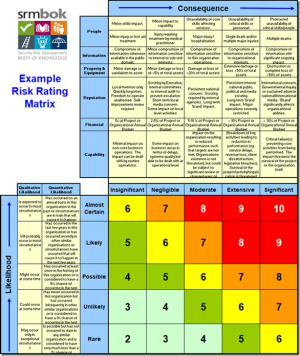Article first published here: https://www.psysafe.com.au/post/psychological-safety-has-it-become-the-next-maslows-hammer
There seems to be such incredible noise around the concept of Psychological Safety, and for good reason. The foundational research as to its utility for innovation, its role in safety cultures, and a mentally healthy workplace is all well established. However, like any new(although not actually that new!) idea that seems to sate the corporate appetite, it is a concept that may be at risk of becoming the next ‘silver bullet’ for every workplace climate deficiency.
Think corporate mindfulness training – which was, and sadly still is – often seen, as the ‘one true solution’ for every iteration of workplace dysfunction, typically to the neglect of evidence-informed/psychosocial approaches that help prevent excessive workplace stress, rather than just supress the related individual symptomology. Even to a ‘mindful hammer’ everything tends to look like a nail.
Now I am not anti-mindfulness, it has its place and I use it almost every day, but its popularization and indiscriminate use to address every conceivable workplace ailment puts it at risk of being added to a long list of fads (think MBTI, EQ, Resilience Training, Positive Thinking, Gratitude Journals, Colouring Books etc.) that have also been sold to the corporate world as a Swiss army knife equivalent for work problems. The truth is, there is no universal panacea for problematic work environments, and no course, speaker or app is likely to make one iota of long-term impact, regardless of how glossy the brochure, how ‘powerful’ the story, charismatic the speaker, or how many features or 5 star reviews the app has. Evidence-informed job design, maximising person-job fit, enhancing psychosocial climate, supportive leadership behaviour, mitigating psychosocial risk, and creating psychological safety – this is where the real heavy-lifting for workplace mental health is done, as together they address the factors that support the psychological health benefits of work.
One of the key challenges with Psychological Safety is concept confusion. According to Professor Amy Edmondson, Psychological Safety is “the sense that we can share our feelings, beliefs, and experiences openly at work without fear of retribution, loss of status, or punishment”, and operates as a group level phenomenon. It is NOT ‘Psychological Health and Safety’ (PH&S), which is (according to The National Standard of Canada for Psychological Health and Safety in the Workplace) about promoting mental health and preventing psychological harm at work. PH&S is part of the often-elusive psychological domain of Occupational/Workplace Health and Safety that focusses on the identification, mitigation of and prevention of psychosocial risk. NOR is Psychological Safety a proxy term for a ‘mentally healthy workplace’. It also IS NOT ‘Psychosocial Safety’, which is more typically attributed to Professor Maureen Dollard and her concept of Psychosocial Safety Climate (PSC), which is defined as the “shared perceptions of organizational policies, practices and procedures for the protection of worker psychological health and safety, that stem largely from management practices”. No wonder people get confused! Yes, Psychological Safety does play a role in PH&S, mentally healthy workplaces, and PSC, but it is a separate concept.
So, now we have hopefully addressed some of the concept confusion, in a practical sense, how can Psychological Safety be useful for organisations? Properly understood, effectively nurtured, and sustained, a culture of psychological safety has the potential for significant impact across all manner of workplace domains. Here are just a few:
Compliance
In organisations where there is a high level of regulatory and compliance obligation, Psychological Safety makes a lot of sense. Taking a behavioural ethics approach, Psychological Safety, specifically, or the extent to which people feel safe to speak up and voice their concerns, is critical for avoiding slippery slopes and navigating the grey areas. When people feel that they can safely challenge the status quo, ask questions, or offer new ideas it allows organizations to be flexible and navigate ethically tricky territory. It also allows organizations to proactively manage risk and own errors and mistakes, by empowering people to raise issues early before they develop into more serious problems that can damage an organisation’s reputation.
Psychological Safety is also an important foundational factor if we want a culture of reporting, where there is acknowledgment of near misses and where flaws, errors, mistakes and challenges are embraced as learning and improvement opportunities, not something to hide from. You only need to investigate the research around things like high performing aircraft flight crews and medical teams to see how this plays out.
Innovation
It seems intuitive to link Psychological Safety to innovation. It takes a lot of work to come up with and execute on any good idea, and this process typically requires the consideration of several bad one’s first. You need people to feel empowered to throw ideas into the mix, but not to feel that they might be ridiculed if they turn out to be no good. Being concerned about how others will respond detracts from an innovative and creative mindset. Psychological Safety won’t automatically generate the ideas for you, but it will encourage idea generation.
Google’s Project Aristotle provides a great example of the key role Psychological Safety plays in supporting high performing teams in an organisation that depends heavily on innovation.
Psychosocial Climate Improvement & Supporting Mental Health
When it comes to improving peoples’ experience of work and addressing psychosocial climate concerns, people who feel Psychologically Safe, are more willing to elevate and address the parts of their job design and work activities that don’t make sense and push back when the demands of their work become intolerable.
One of the biggest flaws in contemporary approaches to workplace mental health is the often-exclusive focus on ‘who’ is exhibiting signs of distress, rather than ‘why’ and ‘how’ the workplace may be contributing to people’s distress. It is the idea that we need to fix people rather than fixing the workplace ‘psychosocial factors’, that may have contributed to, exacerbated, or enabled the issues to emerge. It hasn’t worked for the last 20 years – think over-reliance on EAP, resilience training, mental illness awareness training, landmark day participation – where is the evidence that these have sustainably reduced the cost, severity, or impact of workplace psychological injuries, workplace grievances, mitigated risk, or actually improved people’s experience of work in a tangible way?
Sadly, many of the popular approaches actually help perpetuate a tertiary cycle of distress. To elaborate, this is where a person exhibits symptoms of distress, where we address their presenting symptomology (e.g., send them to the EAP, ask them to be mindful etc.), but then put them back into the same problematic workplace environment and wonder why they (and others) are again showing signs of distress. And the same cycle starts over again, or the person simply leaves. Sound familiar?
A culture of Psychological Safety helps break this cycle, by empowering people to speak up about the psychosocial climate concerns that may be contributing problems, so that these can be addressed. A focus on addressing ‘what’ is causing problems, not ‘who’ has the problem, is essential for creating a mentally healthy workplace environment and improving people’s experience of work.
For those organisations with a genuine commitment to caring for their people, Psychological Safety can be a powerful tool enabling people to express their vulnerabilities without fear of repercussion. In a psychologically safe work environment, it is okay to not be okay. It makes sense that where people trust that they will be treated with care and compassion, they will be much more likely to bring their whole selves to work, even the bits that they don’t readily share on Instagram or their LinkedIn profile. For me, Psychological Safety embodies the idea of voluntary vulnerability, one of the few universal qualities of being human is our imperfection.
The more we empower people to speak up if they need support, the more we can encourage early help seeking behaviour. And not just as it relates to mental-ill health, but also relationship health, financial health, physical health, workplace concerns, and any other issue that can impact on wellbeing.
In summary, as we navigate the sustained disruption of COVID-19 and the great unknowns of our new ways of work, I believe those teams, leaders, and organisations where Psychological Safety is a hallmark of the everyday experience of work, will adapt and overcome challenges and co-create workplaces that protect people’s mental health and enable them to thrive.
However, in the corporate quest to be part of the next big thing, I would implore those procuring, consuming and promoting Psychological Safety as their saving grace to hit pause, reflect, and get a little curious about what they are trying to achieve. Psychological Safety is great, but it’s not a substitute for effective psychosocial risk management or good work design. We also need to ensure people have the right technical, professional, and psychological competencies required to meet the demands of their roles. It’s also not something that you can do a quick course on, report on some good participation numbers or positive facilitator feedback as a sign of success (gasp, when did this become okay?), and then raise a big flag saying our workplace is now ‘Psychologically Safe’.
Developing Psychological Safety requires a mix of intra- and inter-personal capabilities, a willingness to play the long game and a genuine corporate appetite to call out the proverbial elephant in the room. You can’t just tell people to ‘speak up’ – it can be risky, and when it’s around grey area behaviour, ethical issues, or challenging the status quo, all of which involves interpersonal risk, it can have serious and negative consequences. If you don’t understand the nuances of Psychological Safety, organisations are also at risk of creating a ‘call out’ culture, rather than one that has a genuine commitment to continuous improvement. Or even worse, an environment where people speak up but don’t feel heard, where awareness of issues isn’t met with genuine action, where you increase vulnerability, and where learned helplessness actually becomes the norm.
Psychological Safety requires a degree of leadership humility and corporate maturity that some organisations might not be ready for, and it may not be the silver bullet many organizations are looking for. It is worth investing in, but it’s imperative we don’t let it become the next embodiment of Maslow’s hammer.

